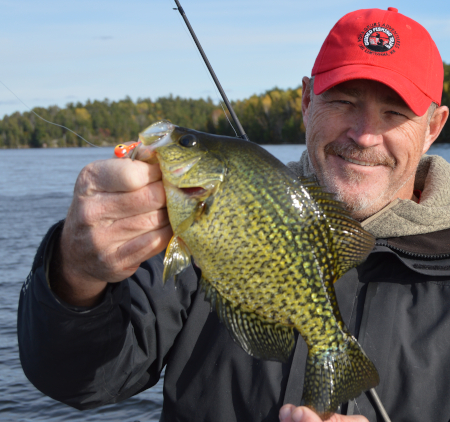
Its fishing line. It’s the time of year when many anglers are getting ready for the open water fishing season. Something that every angler should do is make sure that your fishing line is ready to go fishing. You want to start the fishing season with fresh line. Your line is the only thing between us and the fish. If we want to increase our odds of landing a trophy, we need to have good line on our reel. But in addition to good line, we need the right line. Different lines have different qualities. By considering what we’re looking for in a fishing line, then selecting a line with those qualities, we can increase our odds for fishing success. Here are some ideas for selecting a line to go fishing with.
In the not–so-distant past, monofilament line was the primary line type. Now, in addition to a bunch of different types of monofilaments, we have superlines and fluorocarbons. All have features that might be better for a particular fishing technique.
For many types of fishing, mono is still a great option. If you’re going to be using finesse tactics, jigging, rigging, or slip-bobbering for walleyes or panfish, 4, 6, or 8 pound test mono will do a great job. Use the lighter end of the pound test spectrum, 4 or 6 pound test, for smaller baits and panfish. 6 and 8 pound test is good with heavier baits, stained water, or when you’re after larger fish. Monofilament line has been a good choice for a very long time and continues to serve many anglers very well.
A superline is much different than monofilament. It has no stretch and provides outstanding strength and sensitivity. It looks different than monofilament, and this difference in appearance creates a concern among some anglers that the fish can see it. For faster-moving baits like crankbaits, this doesn’t need to be a concern: The bait is moving fast enough that line visibility doesn’t matter. If you want the increased sensitivity and hooksetting ability of a superline, but think that the appearance of the line might spook the fish, tie a two foot monofilament leader to it. Now you have sensitivity and less visibility.
When using a superline, it’s a good idea to use a lighter action rod and back off on the drag a bit when trolling. This prevents ripping the lure from the fish’s mouth.
Some bass anglers however, use a heavy rod and a tightened down drag when fishing heavy cover with braid. They’re using 50-65 pound test line. The heavy line and rod are what it takes to get a bass out of the heavy cover.
Some lines are available in bright colors. These bright lines make it easier to see your line, so you can see bites better. Sometimes a bite can be detected by seeing your line twitch or jump when a fish takes your lure. Bright lines make that twitch or jump easier to see. Bright lines also make it easier to tie lures on. Older eyes appreciate that. Some anglers wonder if the fish can see “color-enhanced” lines easier and cost you bites. Many very experienced anglers will tell you that they don’t.
However, if you want to be sure the fish don’t see your line, fluorocarbon lines are the way to go. The fish can’t see fluorocarbon. It’s tough stuff, abrasion-resistant, and is becoming very popular. Early fluorocarbons weren’t so good, but many of the current ones are outstanding. In fact, many anglers are using fluorocarbon line for the leader on superlines instead of the monofilament to superline that we talked about earlier.
If you’re going fishing sometime soon, increase your chances for success by using fresh line that’s appropriate for your style of fishing.
To see new and old episodes of Fishing the Midwest television, fishing video tips and articles, visit fishingthemidwest.com
